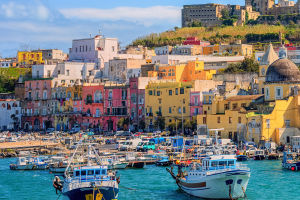Friends, picture yourself stepping off a sunlit ferry into a maze of narrow coral‑stone alleys where centuries of culture converge. Stone Town's UNESCO‑protected core brims with carved doors, bustling bazaars, and hidden courtyards. Compact enough to explore on foot—though local dala‑dalas cost just $0.30 per ride and taxis run about $3—this city offers a dozen treasures within each block.
Many visitors flock to the pristine beaches surrounding the island, yet they often overlook the captivating allure of Stone Town. This vibrant city is a treasure trove of history, culture, and architectural wonders waiting to be explored.
Stone Town, Zanzibar, Tanzania
Walking Tour
Join the community‑led walking tour at 9 AM or 3 PM daily—meet outside the Old Fort. Lasting around two hours, it winds through Mule Park, past historical‑style balconies, and into artisan workshops. The tour is technically free; guides earn tips of $5–$10 per person. Comfortable shoes are a must, as uneven coral floors heat up quickly under midday sun.
Old Fort
Just beyond Forodhani Gardens stands the Old Fort, a coral‑stone stronghold with $3 admission from 9 AM to 7 PM. Inside, vaulted chambers host rotating art galleries and stalls offering batik textiles from $15. On Fridays at 6 PM, local Taarab ensembles perform for $10—snag seats early to enjoy live Swahili melodies echoing off centuries‑old walls.
Darajani Market
Wake up early to wander Darajani Market between 6 AM and 10 AM, where the scent of cloves, vanilla, and frankincense fills the air. Entry is free; fresh mangoes sell for $1 per kilogram, mishkaki chicken skewers for $0.50 each, and mandazi doughnuts for $0.40 a piece. Haggling is expected—smiles and patience go a long way.
Forodhani Feast
When night falls, Forodhani Gardens transforms into a street‑food event from 6 PM to 11 PM. Zanzibar pizza—crispy dough folded around chicken or fruit—costs $2, while grilled reef fish platters with coconut rice run $5. Grab a sugarcane juice ($1) and lean on a waterfront bench to savor seafood, spice, and ocean breeze under lantern glow.
Dhow Sunset
Climb aboard a traditional wooden dhow at 6 PM near Malindi ferry terminal. Tickets run $25 per person, including a soft drink. For an extra $10, live Taarab music accompanies the 1.5‑hour voyage past illuminated palaces. Bring a light jacket—the sea breeze cools quickly after sunset.
Spice Tour
Depart Stone Town at 8 AM for a half‑day spice plantation excursion ($20 per person, includes hotel pickup and lunch). Guides lead through clove, cinnamon, and nutmeg groves 12 km south of the city, offering hands‑on tastings of vanilla pods and fresh coconut. The tour wraps up by 1 PM, returning guests in time for midday rest.
Town Museum
Nestled in a historic merchant's house, the Stone Town Museum opens 10 AM–4 PM with $4 admission. Exhibits trace Omani seafaring, ivory trade routes, and Swahili craftsmanship. For $2 more, audio headsets narrate in multiple languages. Afterward, relax in the shaded courtyard café with a $2 cardamom latte.
Conclusion
From sunrise markets to moonlit dhow sails, Stone Town's ten wonders deliver rich layers of history, flavor, and melody—each accessible by foot or for under $25. Comfortable guesthouses start at $40 per night, while boutique inns begin at $100.
So, next time planning a trip to Zanzibar, allocate time to wander through Stone Town. Engage with its rich history, sample local delicacies, and embrace the artistry that permeates the atmosphere. It's bound to enrich any vacation experience in ways that the serene beaches alone cannot.


